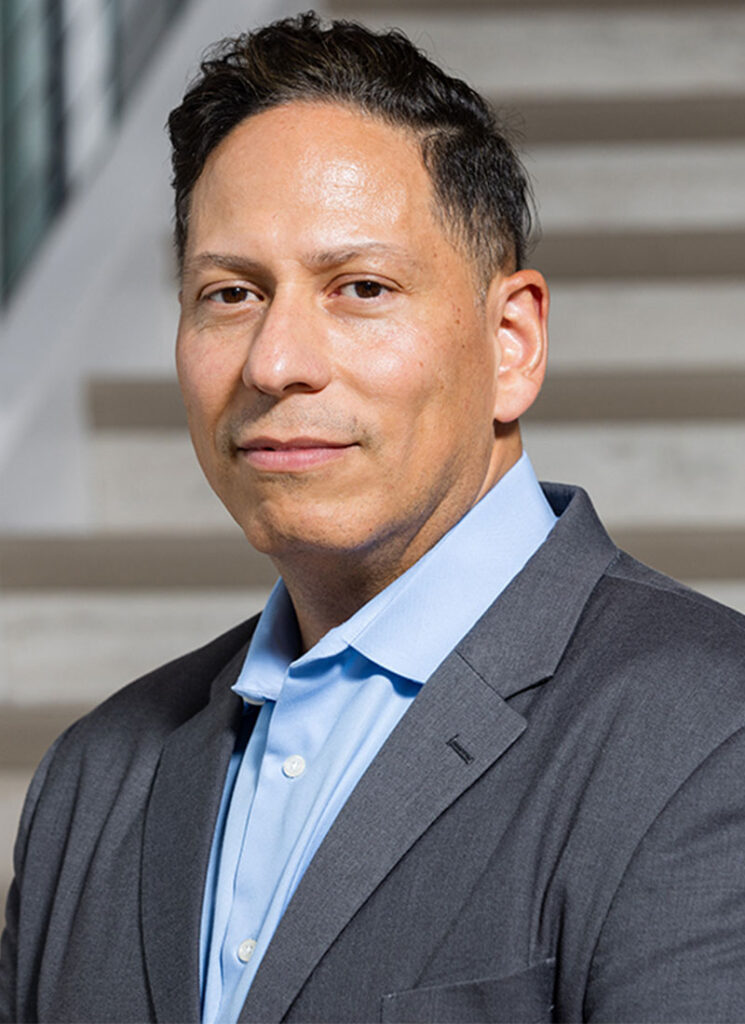The U.S. has made major strides fighting HIV/AIDS. One group hasn’t benefited.
HIV/AIDs rates in the Latino community are going up, not down

Five years ago, Vincent Guilamo-Ramos published a paper in the American Journal of Public Health arguing there was an “invisible U.S. Latino HIV crisis” that would grow worse without intervention.
Unfortunately, the intervening five years proved Guilamo-Ramos, a Johns Hopkins School of Nursing professor, correct. In 2022, Latinos made up nearly a third of new U.S. HIV diagnoses despite being less than 20% of the population.
Guilamo-Ramos, who also serves as executive director of the Institute for Policy Solutions at the School of Nursing, is sounding the alarm and urging policymakers to act.
Here, Guilamo-Ramos talks about the scope of the crisis, its causes, and how it can be addressed.
Can you give an overview of the HIV/AIDS crisis in the Latino community?
The country has made amazing progress in fighting HIV. We have highly effective prevention. Most people living with HIV have amazing treatments that don’t just keep them alive but also make them what we call “virally suppressed,” which means biologically, they’re unable to transmit the virus. When I first started this work, that wasn’t the case. Many people were dying, and we had some treatments, but they weren’t as highly effective as they are today.
The problem is that while we’ve had tremendous success—we’ve had a 19% reduction in overall new infections over the past 12 years— the Latino community as a whole has been experiencing an increase in new infections.
In the most recent data, released a few months ago by the CDC, we saw things had significantly worsened. Not only was the epidemic continuing to increase among Latinos, but for the first time, Latino men who have sex with men became number one in terms of new infections relative to any other group. That has never been the case before.
When you look at the continuum, not just in terms of new infection, but at testing, at linkage to treatment, at achieving viral suppression, Latinos fare worse relative to any other group or to the overall population.
What’s driving these disparities?
The problem is really about what we call inequities. These are unfair and unjust ways in which we deliver care for our purposes, HIV prevention and treatment, and how policies are structured in ways that don’t support the Latino community.
A lot of the evidence-based tools that we have, the most effective HIV prevention pill or injection, many of those things are not available to the Latino community because they’re uninsured or underinsured. They may lack awareness of preventative treatment. There may not be a bilingual, bicultural provider raising the issue to them that they can understand and benefit from. When we think about achieving viral suppression, we need to have a routine source of care where someone is really helping us to maintain our adherence.
There’s a ton of attention around the border and migration, much less attention around the other places where Latinos need support, where we should be having more discussion about their health needs.
What sort of policy changes do you think would make a difference?
First and foremost, there needs to be political will to center the Latino community and say, “there’s a problem here.” There’s been so much messaging around success that there’s almost a hesitancy to say, “we also need to look at the places where there’s more that needs to be done.”
The way we get that to happen is by really naming the inequity, highlighting that it exists, which is what our recent paper in the New England Journal of Medicine does. It means having policymakers allocate specific programs and resources that are targeted to the Latino community—it can’t just be general. We’ve got to ensure that each of these amazing tools can be implemented effectively in Latino communities. That means partnering with the Latino community. It means meaningful engagement and having people with lived experience to partner with us so we can get the job done.
What do you expect to see in terms of HIV/AIDS policy from the Trump administration?
I’ve been doing this work for more than 25 years, and we’ve had HIV/AIDS for about 40 years. If I look back at the presidents—Clinton, Bush, Obama, Trump, or Biden—they all have made significant contributions and progress to ending HIV.
I don’t want to single out Trump, but I will say this because I think it’s true. We have something called the Ending the HIV Epidemic Initiative in the U.S. It’s a national plan for ending HIV by 2030. We’re not going to make that goal, but boy, have we made progress. That plan was started under President Trump.
President Obama created the first National HIV/AIDS Strategy. President Bush created PEPFAR and targeted HIV response around the globe.
We can bring this home. This is something that, irrespective of party, there’s some common ground. So I feel optimistic that coming into this next phase, this will be a priority. We know that we can do it. I believe if we just center the communities that are experiencing the lack of progress and the worsening of the epidemic, then we can get it done. We can actually end HIV in the nation.